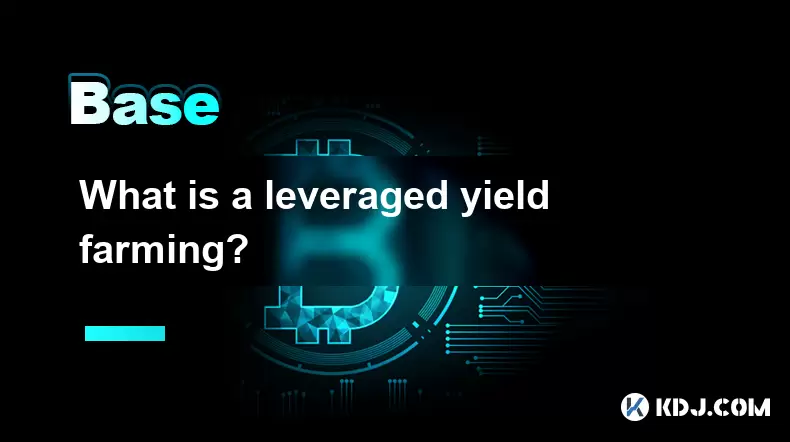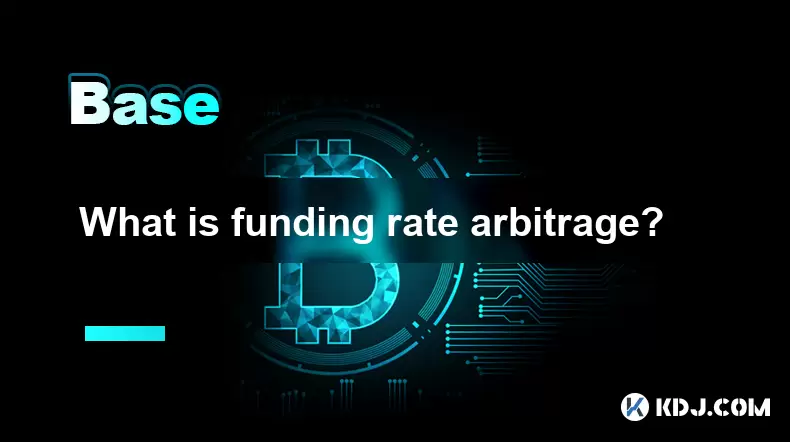-
 Bitcoin
Bitcoin $108,882.1253
-0.18% -
 Ethereum
Ethereum $2,552.5669
-0.81% -
 Tether USDt
Tether USDt $1.0005
0.02% -
 XRP
XRP $2.2403
-2.26% -
 BNB
BNB $660.0215
-0.23% -
 Solana
Solana $150.5827
-1.94% -
 USDC
USDC $1.0000
0.00% -
 TRON
TRON $0.2862
0.88% -
 Dogecoin
Dogecoin $0.1671
-3.38% -
 Cardano
Cardano $0.5826
-3.24% -
 Hyperliquid
Hyperliquid $38.7689
-4.13% -
 Sui
Sui $2.9267
-2.73% -
 Bitcoin Cash
Bitcoin Cash $482.1140
-4.17% -
 Chainlink
Chainlink $13.3784
-3.15% -
 UNUS SED LEO
UNUS SED LEO $9.0410
0.30% -
 Avalanche
Avalanche $18.1461
-3.09% -
 Stellar
Stellar $0.2404
-2.24% -
 Toncoin
Toncoin $2.8244
-2.01% -
 Shiba Inu
Shiba Inu $0.0...01161
-2.32% -
 Litecoin
Litecoin $88.1091
-3.05% -
 Hedera
Hedera $0.1558
-2.72% -
 Monero
Monero $318.0662
-2.09% -
 Polkadot
Polkadot $3.4399
-3.95% -
 Dai
Dai $1.0000
-0.01% -
 Ethena USDe
Ethena USDe $1.0002
0.00% -
 Bitget Token
Bitget Token $4.4678
-2.42% -
 Uniswap
Uniswap $7.3474
-4.23% -
 Pepe
Pepe $0.0...09803
-5.95% -
 Aave
Aave $269.1728
-3.44% -
 Pi
Pi $0.4848
-2.71%
What are gas fees?
Gas fees on blockchains like Ethereum compensate for computational resources, fluctuating based on network demand and transaction complexity.
Jul 04, 2025 at 05:49 am

Understanding Gas Fees in the Cryptocurrency Ecosystem
In the world of blockchain and smart contracts, gas fees are a crucial component that users must understand to interact effectively with decentralized networks. These fees are not arbitrary; they serve specific functions within blockchain protocols, especially those like Ethereum, which rely heavily on computational resources for transaction execution.
Gas fees are payments made by users to compensate for the computational energy required to process and validate transactions or smart contract operations on a blockchain network. Unlike traditional banking systems where fees might be flat or based on transaction size, gas fees fluctuate depending on network congestion and the complexity of the operation being performed.
How Gas Fees Are Calculated
The calculation of gas fees is rooted in two primary variables: gas limit and gas price. The gas limit refers to the maximum amount of gas a user is willing to spend on a transaction, while the gas price is the amount of cryptocurrency (e.g., ETH) the user is willing to pay per unit of gas.
- Gas Limit: This determines how much processing power your transaction can use. Complex smart contract interactions typically require higher gas limits than simple token transfers.
- Gas Price: Expressed in gwei (a subunit of ETH), this value reflects how much you're willing to pay per gas unit. Higher gas prices prioritize your transaction in the network queue.
The total fee is calculated as: Total Fee = Gas Used × Gas Price. Notably, if the gas limit is set too low, the transaction may fail due to insufficient gas, though the network will still charge for the computation attempted.
Why Gas Fees Exist
Gas fees exist to prevent spam and abuse on blockchain networks. Without such a mechanism, malicious actors could flood the network with computationally expensive or infinite loop operations, effectively paralyzing it.
- Network Security: By requiring payment for each computation, blockchains deter denial-of-service attacks and ensure only legitimate transactions are processed.
- Resource Allocation: Gas fees help allocate scarce network resources efficiently. Users who need faster confirmations can bid higher gas prices, incentivizing miners or validators to prioritize their transactions.
In essence, gas fees act as a market-driven pricing model for computing power on decentralized networks.
Differences Between Ethereum and Other Blockchains
While Ethereum popularized the concept of gas fees, other blockchains have adopted variations tailored to their architecture and scalability goals.
- Ethereum: Uses dynamic gas pricing with its EIP-1559 upgrade, which introduced a base fee that burns part of the gas paid, reducing inflationary pressure.
- Binance Smart Chain (BSC): Offers lower and more predictable gas fees compared to Ethereum, making it attractive for high-frequency DeFi users.
- Polygon (Matic): Operates as a Layer 2 solution, significantly reducing gas costs by handling transactions off-chain before final settlement on Ethereum.
Each platform balances decentralization, security, and scalability differently, leading to distinct gas fee structures and user experiences.
Tools to Monitor and Manage Gas Fees
To optimize transaction costs, users often rely on real-time gas fee monitoring tools and wallet integrations.
- Gas Trackers: Platforms like Etherscan Gas Tracker, GasNow, and Blockchair provide live updates on gas prices across different priority levels (slow, normal, fast).
- Wallet Integrations: Wallets like MetaMask allow users to manually adjust gas prices and limits or auto-calculate optimal values based on current network conditions.
- Layer 2 Solutions: Using rollups or sidechains like Arbitrum or Optimism can drastically reduce gas expenses without compromising security.
Familiarity with these tools empowers users to minimize costs and avoid unnecessary delays during high-traffic periods.
Frequently Asked Questions
What happens if I send a transaction with too little gas?
If the gas limit is insufficient to execute the transaction or smart contract interaction, the operation will fail. However, the network will still deduct the gas used up to that point from your wallet balance.
Can gas fees be refunded?
Only unused gas is returned to the sender after a transaction completes. If you set a high gas limit but the operation uses less, the excess ETH is refunded automatically. Failed transactions do not receive refunds for consumed gas.
Why do gas fees spike during certain times?
High demand for block space increases competition among users to get their transactions included in the next block. During events like NFT drops or DeFi protocol launches, network congestion leads to surging gas prices.
Are gas fees unique to Ethereum?
No, many other blockchains use similar mechanisms to manage resource allocation and prevent spam. However, terminology and implementation details may vary. For instance, some networks refer to them as "transaction fees" or "network fees" rather than gas.
Disclaimer:info@kdj.com
The information provided is not trading advice. kdj.com does not assume any responsibility for any investments made based on the information provided in this article. Cryptocurrencies are highly volatile and it is highly recommended that you invest with caution after thorough research!
If you believe that the content used on this website infringes your copyright, please contact us immediately (info@kdj.com) and we will delete it promptly.
- Bitcoin's Pattern Break: Are HODLers the Key to the Next Surge?
- 2025-07-04 18:50:12
- Bitcoin Price, Trump's Bill, and the $150K Dream: A NYC Take
- 2025-07-04 19:50:12
- Ethereum, LILPEPE, and the July Bounce: Will Pepe Steal ETH's Thunder?
- 2025-07-04 19:10:12
- Binance Institutional Loans: Unlocking 4x Leverage and Zero Interest for Whales
- 2025-07-04 19:15:12
- Bitcoin Bull Run: Analysts Eye Peak in Late 2025?
- 2025-07-04 19:20:13
- Pepe Indicators, Bullish Forecast: Can the Meme Coin Rally?
- 2025-07-04 19:25:12
Related knowledge

What is a user-generated content (UGC) NFT platform?
Jul 04,2025 at 01:49pm
Understanding the Concept of a UGC NFT PlatformA user-generated content (UGC) NFT platform is a digital marketplace or ecosystem where users can create, mint, and trade non-fungible tokens (NFTs) that represent ownership of original digital content they produce. Unlike traditional NFT platforms where creators often include professional artists or develo...

What is a token generation event (TGE)?
Jul 04,2025 at 07:14am
Understanding the Basics of a Token Generation Event (TGE)A Token Generation Event (TGE) refers to the process through which a blockchain project creates and distributes its native tokens to investors, participants, or stakeholders. This event is often associated with new cryptocurrency projects launching on platforms like Ethereum, Binance Smart Chain,...

What is a block explorer API?
Jul 04,2025 at 05:07am
Understanding the Role of a Block Explorer APIA block explorer API is a crucial interface that enables developers and users to interact programmatically with blockchain data. Unlike traditional APIs used in web services, a block explorer API specifically provides access to blockchain-related information such as transaction details, wallet balances, bloc...

What is a leveraged yield farming?
Jul 04,2025 at 09:36am
Understanding Leveraged Yield FarmingLeveraged yield farming is a more advanced form of yield farming, which itself is a popular method in the decentralized finance (DeFi) ecosystem to earn returns by providing liquidity to various protocols. In traditional yield farming, users deposit tokens into a DeFi platform and earn rewards in return, often in the...

What is open interest in derivatives?
Jul 03,2025 at 02:49pm
Understanding Open Interest in DerivativesOpen interest is a critical metric used in the cryptocurrency derivatives market, particularly when analyzing futures and options contracts. It represents the total number of outstanding contracts that have not been settled or closed by either party involved. Unlike trading volume, which counts all trades made i...

What is funding rate arbitrage?
Jul 04,2025 at 11:43am
Understanding Funding Rate Arbitrage in the Cryptocurrency MarketFunding rate arbitrage is a trading strategy employed by crypto traders to exploit differences in funding rates across various perpetual futures exchanges. In perpetual contracts, funding rates are periodic payments made between long and short traders depending on whether the price of the ...

What is a user-generated content (UGC) NFT platform?
Jul 04,2025 at 01:49pm
Understanding the Concept of a UGC NFT PlatformA user-generated content (UGC) NFT platform is a digital marketplace or ecosystem where users can create, mint, and trade non-fungible tokens (NFTs) that represent ownership of original digital content they produce. Unlike traditional NFT platforms where creators often include professional artists or develo...

What is a token generation event (TGE)?
Jul 04,2025 at 07:14am
Understanding the Basics of a Token Generation Event (TGE)A Token Generation Event (TGE) refers to the process through which a blockchain project creates and distributes its native tokens to investors, participants, or stakeholders. This event is often associated with new cryptocurrency projects launching on platforms like Ethereum, Binance Smart Chain,...

What is a block explorer API?
Jul 04,2025 at 05:07am
Understanding the Role of a Block Explorer APIA block explorer API is a crucial interface that enables developers and users to interact programmatically with blockchain data. Unlike traditional APIs used in web services, a block explorer API specifically provides access to blockchain-related information such as transaction details, wallet balances, bloc...

What is a leveraged yield farming?
Jul 04,2025 at 09:36am
Understanding Leveraged Yield FarmingLeveraged yield farming is a more advanced form of yield farming, which itself is a popular method in the decentralized finance (DeFi) ecosystem to earn returns by providing liquidity to various protocols. In traditional yield farming, users deposit tokens into a DeFi platform and earn rewards in return, often in the...

What is open interest in derivatives?
Jul 03,2025 at 02:49pm
Understanding Open Interest in DerivativesOpen interest is a critical metric used in the cryptocurrency derivatives market, particularly when analyzing futures and options contracts. It represents the total number of outstanding contracts that have not been settled or closed by either party involved. Unlike trading volume, which counts all trades made i...

What is funding rate arbitrage?
Jul 04,2025 at 11:43am
Understanding Funding Rate Arbitrage in the Cryptocurrency MarketFunding rate arbitrage is a trading strategy employed by crypto traders to exploit differences in funding rates across various perpetual futures exchanges. In perpetual contracts, funding rates are periodic payments made between long and short traders depending on whether the price of the ...
See all articles

























































































